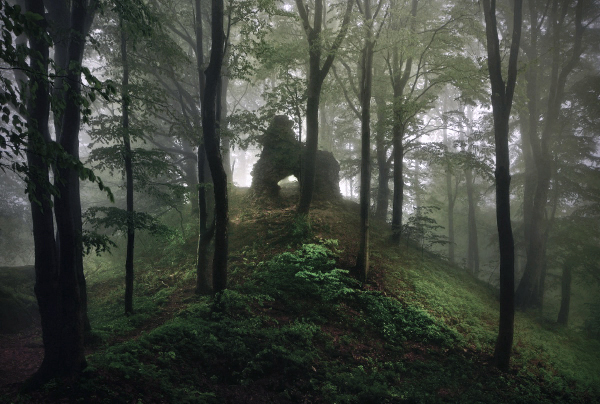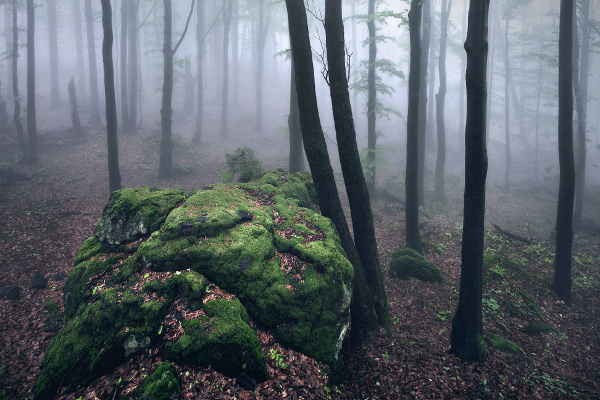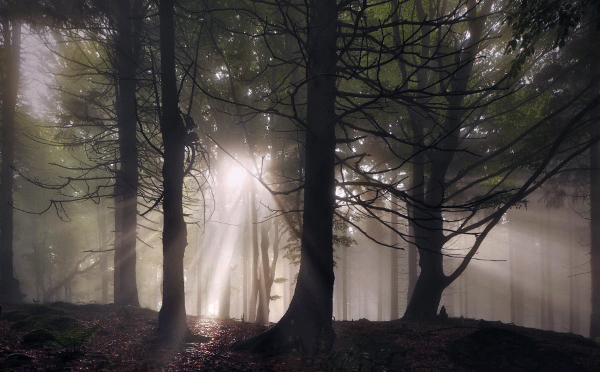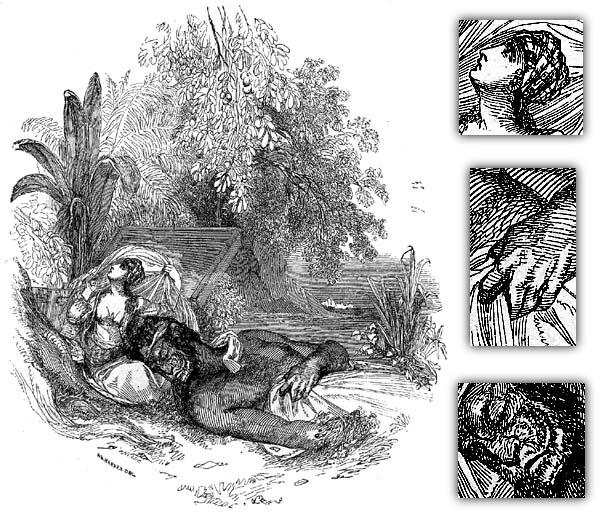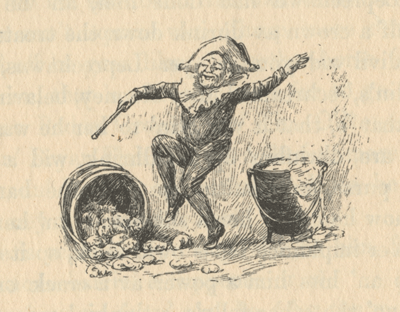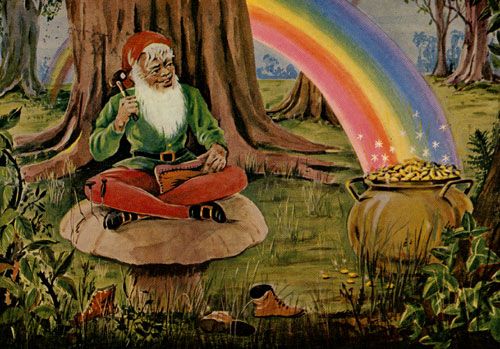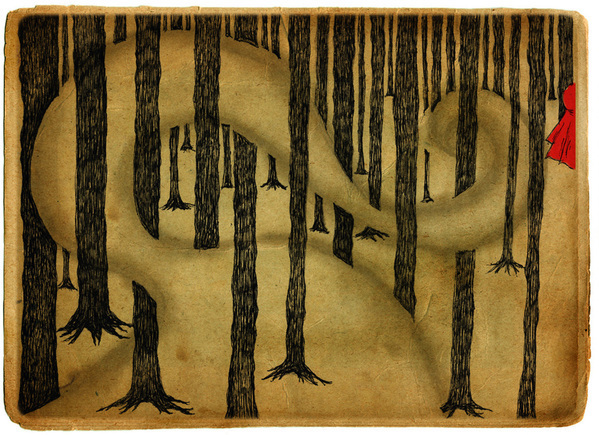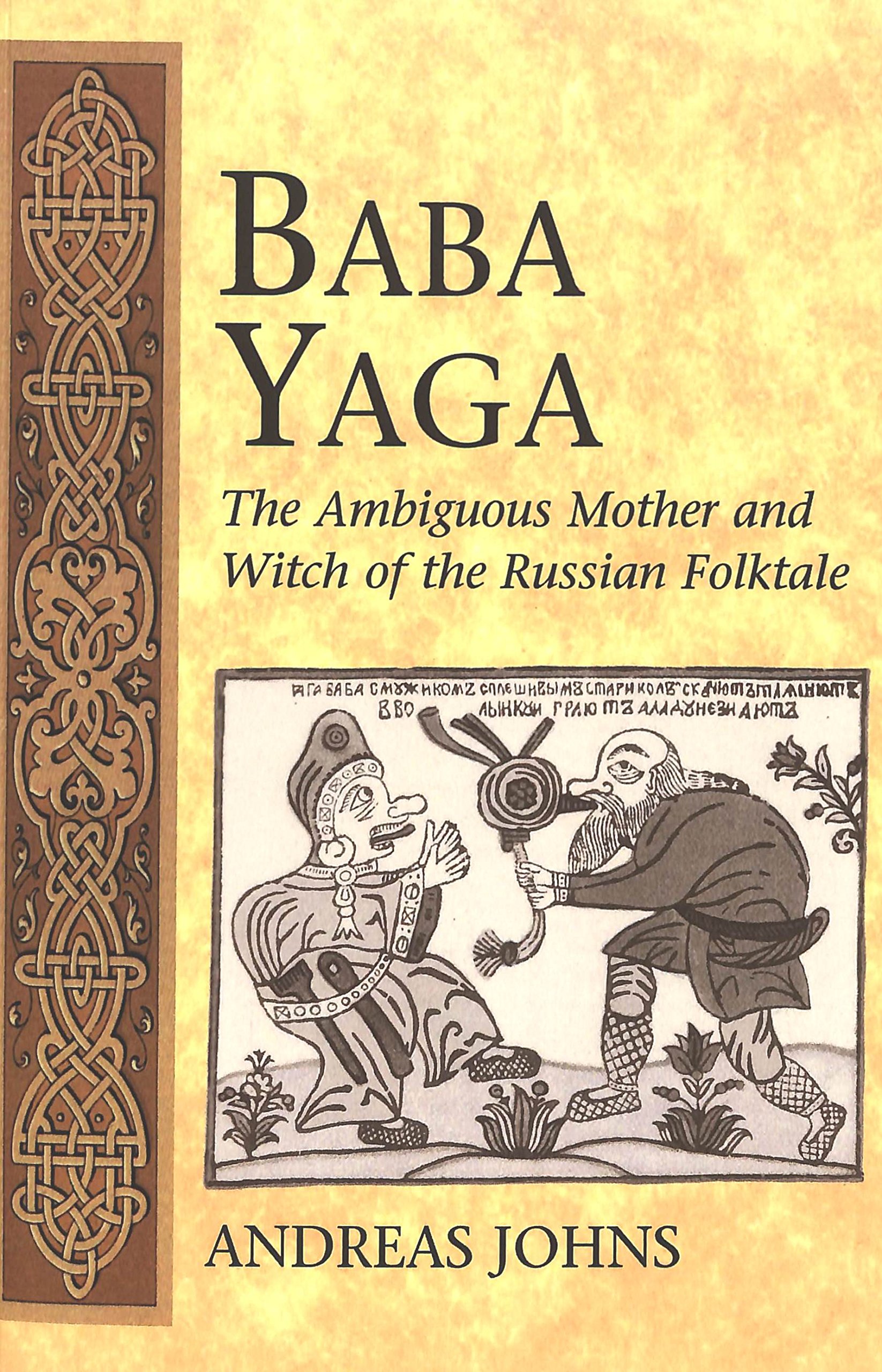12 MONTHS - 12 FORESTS - 12 TALES
UK Title: “Gossip from the Forest: The Tangled Roots of Our Forests and Fairytales”
MARCH: Airyolland Wood & a retelling of Thumbling
************************************
Note: The first chapter was rich with discussion points! In the interest of manageability, we decided to concentrate our notes on two of the more fascinating subjects and the retelling of Thumbling. Fortuitously, this month we connected right when Gypsy was reading the chapter and making notes. Our resulting dialogue is a little unusual as far as book discussions go, and we’ve taken the liberty at re-ordering some of our notes and inserting quotes so it makes more sense to someone who hasn’t read the book, but we hope you’ll find it interesting nonetheless.
Jacket summary: Forests are among our most ancient primal landscapes, and fairy tales some of our earliest and most vital cultural forms. In this fascinating and illuminating book, Maitland argues that the two are intimately connected: the mysterious secrets and silences, gifts and perils of the forests were the background and source of fairytales. The links between the two are buried in the imagination ad in our childhoods.
 Maitland journeys in forests through a full year, from the exquisite green of a beechwood in spring to the muffled stillness of a snowy pine forest in winter, explaining their complex history and teasing out their connections with the tales.
Maitland journeys in forests through a full year, from the exquisite green of a beechwood in spring to the muffled stillness of a snowy pine forest in winter, explaining their complex history and teasing out their connections with the tales.
There are secrets in the tales, hidden identities, cunning disguises, just as there are surprises behind every tree in a forest; there are rhythms of change in the tales like the changes of the seasons; there are characters , both human and animal, whose assistance can be earned or spurned and there is over and over again - the journey or quest, which leads to self-knowledge and success. The forest is the place of trial in fairy stories, both dangerous and exciting. Coming to terms with the forest, surviving its terrors, using its gifts and gaining its help, is the way to “happy ever after.”
As a fiction writer, Maitland has frequently retold fairy stories, and she ends each chapter with an enchanting tale, related imaginatively, to the experience of being in that specific forest.
Richly layered, full of surprising connections, and sparkling with mischief, From the Forest is a magical and unique blend of nature writing, history and imaginative fiction.
DISCUSSION:
On Fairy Tales and Location & the Importance of Forests
Gypsy:
Here are random notes as I read. Please forgive this form of note taking as I read...
Kristin:
Hey!
Gypsy:
Hey - hi! Is this a thesis experiment? It's kind a of a cool idea. I just read part where she explains to Adam, her son, the idea for the book:
“I wanted to match up what is in the forests with fairy stories, see how the themes of the fairy stories grow out of the reality of the forest, and the other way round too-show how people see the forests in a particular way because of fairy stories.”-p. 20
Kristin:
Sounds like it!
Gypsy:
I like that quote: p10- But forests, like fairy stories, need to be chaotic - beautiful and savage, useful and wasteful, dangerous and free.
I'm not sure fairy tales are always like this but PEOPLE are! Or should be. (ie. people should be vital, embracing imperfections as well as hidden resources and more). I see fairy tales as more.. “spare” than this. (At least from tale to tale.) It's one of the reasons so many of us fit into so many different tales. Perhaps, collectively speaking, fairy tales cover that range though, which is perhaps another reason why, different tales resonate more with some people than others.
Kristin Visconti
Fairy tales definitely tend to deal in extremes and opposites.
Gypsy:
Yes - extremes and contrasts for sure. I still like that quote. :)
Gypsy
I agree with her note that the physical woods can help recall the tales - yes - even if you haven't been exactly to that GPS location before, a tale that resonated with you somehow seems to echo in such places.
Sort of lIke when you walk through the city and recall an urban legend because of a sound, smell or sight - like the location prompts a memory of a story.
“Forests to these northern European peoples were dangerous and generous, domestic and wild, beautiful and terrible. And the forests were the terrain out of which fairy stores...evolved”-p.6
p7- Landscape informs the collective imagination as much or as more than it forms the individual psyche and its imagination, but this dimension is not something to which we always pay enough attention.
The sense of “place” (aka the setting of the story) having an impact on a tale, is not something I've really looked at/paid much attention to, but something I’ll be more aware of now.
Oh like that quote on pg 8, the whole paragraph actually, but I’d finish it a little differently:
"believe the great stretches of forest.. with all their secret gifts and perils... created the FT themes we know best... coming to terms with the forest.." … I'd finish the “quote-mash” with IS LIFE.
“The forest is the place of trial in fairy stories, both dangerous and exciting. Coming to terms with the forest, surviving its terrors, utilising its gifts and gaining its help is the way to ‘happily ever after’”-p. 8
I’m not sure I agree with how the author talks about birthplace of main religions being certain 'open' places of land as an example. And I think fairy tales are actually very different from myths and religious stories too - fairy tales often have mythic elements but overall they're ordinary stories with a twist of 'other' (wonder). They're not about grand schemes, deities being involved, etc They’re more about the choices people make when presented with a situation (good or bad).
Kristin:
And yes, I thought it was an interesting point about religions reflecting the various locations, but I obviously don't think that's all there is to it. It bugs me in general when scholars lump religion and myth/fairy tale all together. I'm biased, but I think there's a pretty obvious distinction.
Gypsy:
I agree - religion is different - very different. I would cite different reasons for difference (except I don’t want to get waylaid into a discussion about religion) but I agree with you that religion, religious stories et definitely can't be lumped with fairy tales. And they shouldn't be.
Kristin:
But, when you get to the part where she compares the effect location has on the Grimm tales vs. Arabian Nights, I thought that was really interesting.
p7- One of the great services.. Zipes has done is to show how ‘site specific’ fairy stories are. To put it at its most basic, in the Arabian Nights the heroes do not go out and get lost in the forest, or escape into the forest; this is because, very simple, there aren’t any forests. But it goes deeper than this - they do no get lost at all; the heroes either set off freely seeking adventure.. or are exiled, escape murder.. or are abducted. ...forests are a place where a person can get lost and can also hide - losing and hiding, of things and people, are central to european fairy stories in ways that are not true of similar stories in different geographies.
Gypsy:
Hm. I need to think about that a bit more. And now I need to look at how ‘similar stories’ from forest places and desert places are, in fact, similar and how they are different…
OK- weird point: do people really express surprise re the importance of the forest in the popular tales (in the West especially)? That's not my experience - the opposite in fact.
Kristin
I think when people express surprise about the importance of forests, or at least what my initial reaction, was kind of a "so what? There were trees and forests everywhere back then." It was when she compared them to Arabian Nights and how the setting of a desert vs. forest really does affect the theme that it made more sense to me- The forest brings out themes like getting lost and hiding, which is absent in Arabian Nights, since getting lost isn’t really an issue in the desert.
p6- The forests were protective too. Of course you can get lost in the forest, but you can also hide in the forest, and for exactly the same reason: in forests you cannot get a long view.
Gypsy:
Maybe that’s why we see more supernatural elements in Arabian Nights’ like stories maybe? eg Transformation as a way of hiding, the invisible becoming visible (as opposed to coming to a place in the woods where you find something - or it finds you). Off the top of my head only here. I’m not familiar enough with desert (and wasteland) tales to know if this theory is even close.It would be nice to see a similar exploration of these other places & stories - how they’re influenced by landscape in contrast/ comparison to a woods-based story (eg Arabian Nights - desert, Sinbad - sea, city stories).
How Do We Learn Fairy Tales?
Kristin:
Anything else about the chapter? I thought it was interesting in the beginning how she asked her son how he first heard fairy tales and he didn't remember. There are some versions I know where I learned them from, like Disney or certain picture books I had, but many I honestly don't know-I don't remember being taught or told them, yet I know the stories.
Gypsy:
I was a reader and I listened to a lot of tales on record and tape. My dad told made up stories but not fairy tales. My biggest impression was probably the record tales - the “oral” tellings. :)
Kristin:
It's fascinating to me that fairy tales sneak their way into our minds even though we don't realize it…
Gypsy:
I think now there are images everywhere that allude to tales but they don't sink in consciously unless you know the tales too. And they really are everywhere - even without Disney. That’s a good thing I think.
Then later you hear a tale and recognize aspects from something else you heard or your own story or environment... I love fairy tales for this reason among others.
Kristin:
For sure. I knew the plots to all the classics even though I don't think I was told or read some of them, did I piece together references from pop culture? I don't even know.
Gypsy:
Osmosis! ;) (I’m only half joking.)
Happy Endings in Grimms vs. Andersen
Gypsy:
I had a multicultural awareness of tales very early and their imperfections/ lack of a guaranteed happy ending etc was clear. I always like the quote from The Princess Bride Ever After that said ""And though (they) lived happily ever after, the point, gentlemen, is that they lived." It likely means (in context of the film) that the tale was based in historical truth but can also be interpreted that they lived vital, full lives - life didn't stop at the wedding.
Kristin:
Yes. Doesn't she say something about how all traditional tales end happily? Because I just wrote in the margin "NO". It's definitely not true in Grimms, although I guess if you take "classic" fairy tales to mean "the popular and well known ones..." but I believe she was comparing Grimms to Andersen.
Gypsy:
Hm - not sure - she clearly hates HCA! LOL
Funny - personally, I really love many of his stories. Wait - to clarify - I love the basics of many of his stories but not how he told them necessarily, nor how he resolved them. It was zero surprise to me when I read that he'd not really made most of them up, but had taken elements from tales he knew as a child and retold them, recombining them and expanding them into versions of his own. I'd LOVE to read a volume of stories Andersen drew from.
Kristin:
Me too. I love stories like Ugly Duckling, even Princess and the Pea is growing on me-partly thanks to your interpretation of it shared in the comments a while back! Little Mermaid isn't my favorite tale but I think I prefer Andersen's to Disney's. Some of his stories are just pointlessly depressing, but frankly, so are lots of Grimms, Schonwerth, and lots of other folklore.
Gypsy:
The author mentions Lang too. If I had to choose one collection to keep/take it would be Lang's color books for all the diversity of tale types and countries of origin. I really love that, to me, they show how much people are the same all over the world yet the different flavors make it an exploration of discovery too.
Be sure to watch out for next month’s discussion in which we’ll discuss the chapter for April and a wander around Saltridge Wood, as well as the author’s retelling of The White Snake.





















